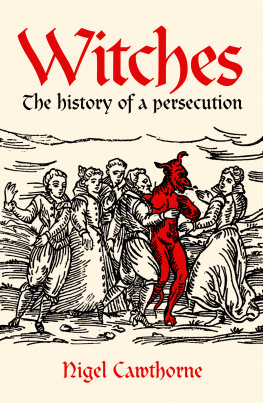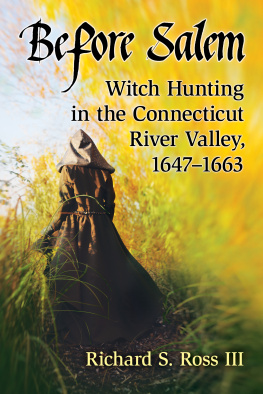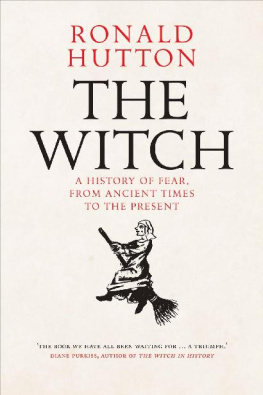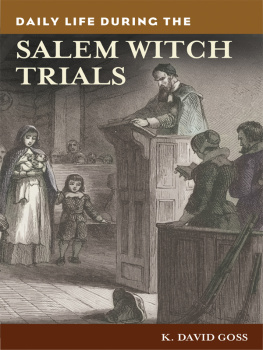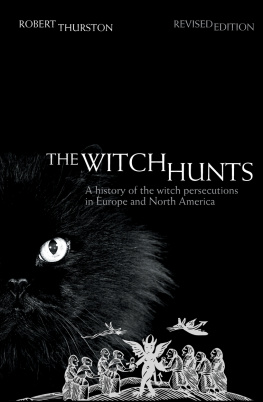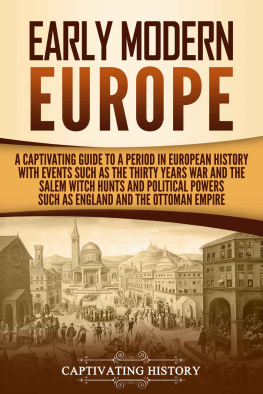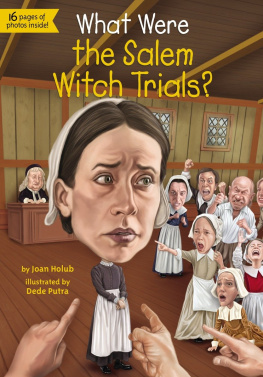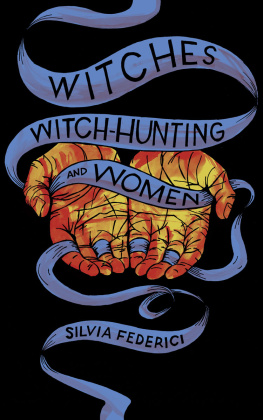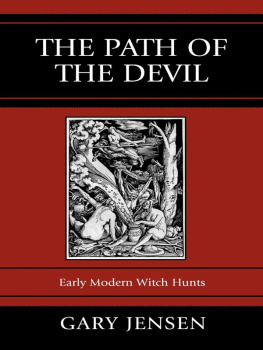ILLUSTRATIONS
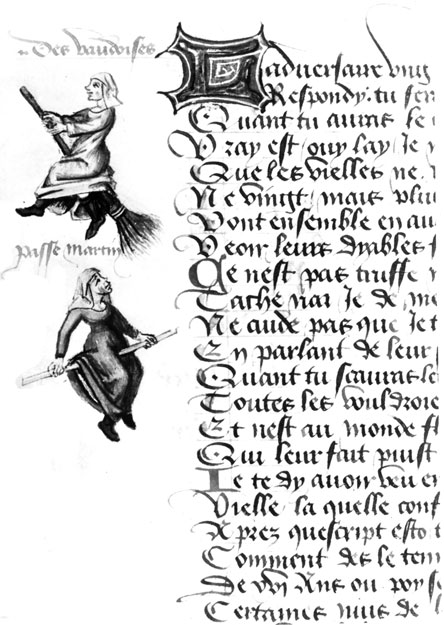
Illustration 1. This illumination comes from the margin of a manuscript of Martin le Francs Le Champion des Dames (The Defender of Ladies) from 1451, which generally argues against misogynist and witch stereotypes. This picture portrays Waldensian witches as women dressed in simple peasants clothing riding on broomsthe first drawing of witches flying on broomsticks. Photo credit: Snark/Art Resource, NY.
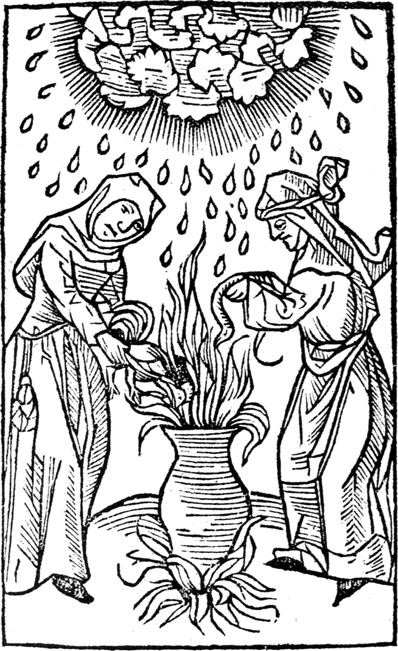
Illustration 2. This early woodcut comes from an edition of Ulrich Mller or Molitors De Lamiis et Phitonicis Mulieribus (On Witches and Female Oracles) printed in Cologne in 1489. Two women dressed in clothing typical for the lower urban and peasant classes are conjuring a hailstorm by adding a rooster and a snake to a flaming cauldron. This and other drawings from the text were highly influential for later witchcraft imagery. Molitor, Ulrich. De Laniis [sic] et phitonicis [sic] mulieribus/On Witches/Von den Unholden und Hexen, 1489; facsimile ed. Paris: Emile Noury, 1926.
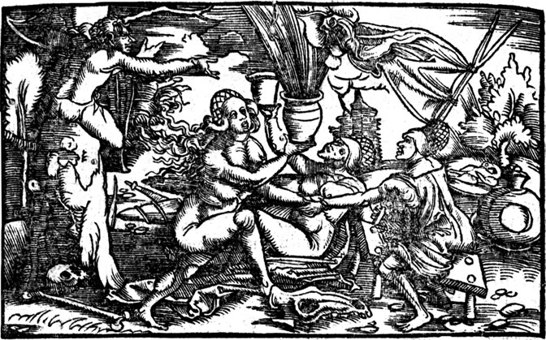
Illustration 3. The woodcut heads a collection of sermons by Johannes Geiler von Kaysersberg, Die Emeis (The Ant Colony) published in 15161517. It illustrates a story from Niders Formicarius about a woman (right) who took part in the Wild Ride on a bench, holding a banner. The man in the tree is identified as Satan or the god Saturn. The powerful imagery develops from Molitors witches in Illustration 2, especially the sexualized portrayal of nude witches with cauldrons in the center. Courtesy of the University of Pennsylvania.
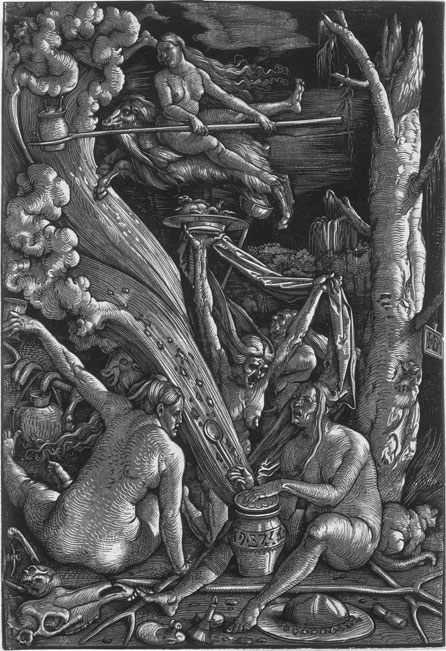
Illustration 4. This famous woodcut of Hans Baldung Griens A Group of Witches from 1510, brings the witch into high art, further developing the images in the woodcut in Die Emeis. Three witches do magic around a magically streaming jar while a fourth flies on a goat with another jar. The nudity and jars also make it highly sexualized, while the bones and hat littered on the ground add a macabre touch. Photo credit: Reunion des Musees Nationauz/Art Resource, NY.
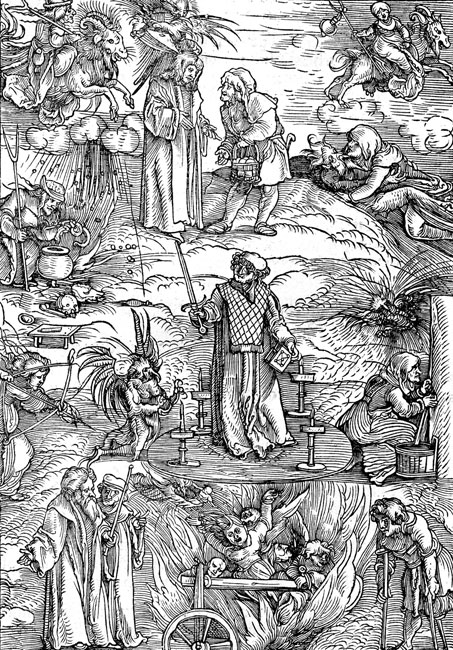
Illustration 5. This page by Hans Schuffelin for a legal handbook by Ulrich Tengler, Der Ne Layenspiegel (The New Mirror for Laymen) of 1568, illustrates typical concerns with black magic, sorcery, and demons. The magistrate in the center wields a sword and holds a book of justice, magically protected from a demon within a circle and candles. Around him are supernatural dangers, from the top right clockwise: a witch riding to the sabbat; a witch and a demon having sex; a witch milking a post; two magistrates (possibly the author and his son) and a lame person frame the burning punishment of witches; a witch shooting a poisoned arrow; a witch brewing a hailstorm; another witch flying on a ram to a sabbat; and a demon bargaining with a man over eggs. Courtesy of the University of Pennsylvania.

Illustration 6. This portrayal of the sabbat is one of many illustrations from Francesco Maria Guazzos Compendium Maleficarum (Compilation of Witches) of 1626. This picture shows witches, both male and female dressed in fine clothing of the upper classes, eating with and being served by demons. They are probably consuming dead babies, shown being cooked in another illustration from the book. Courtesy of the University of Pennsylvania.
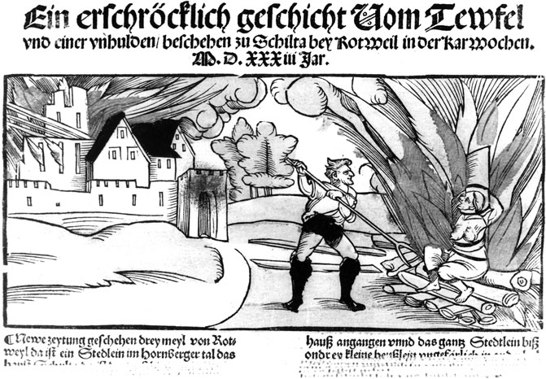
Illustration 7. The broadsheet woodcut by Erhard Schn depicts a witch being burned at Oberndorf in 1533. The scene lacks the court officials and crowd from the city who would normally be present. The witch allegedly committed arson at the Devils request, burning down the town of Schiltach in the background. Photo credit: Foto Marburg/ Art Resource, NY.
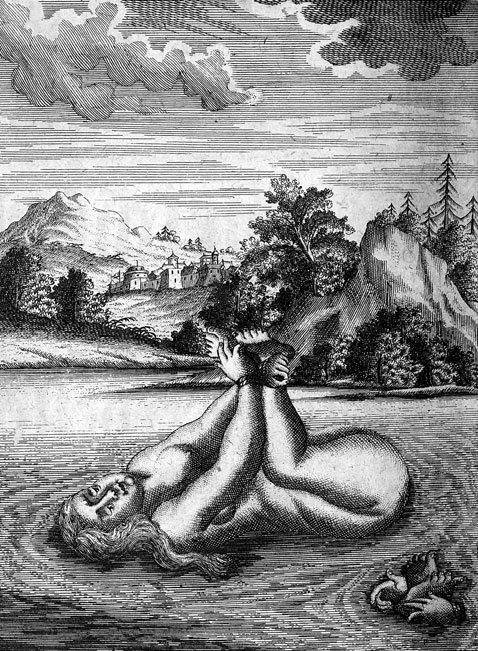
Illustration 8. This depiction of the ordeal of cold water, swimming, or dunking the witch comes from Eberhard David Hauber, Bibliotheca sive acta et scripta magica, (Library of Magical Acts and Writings) of 17381745. The guilty party improbably rests on top of the water as if on ice. In the lower right, only the hands and feet of an accused who has proven her innocence remain above the waters surface. Courtesy of the University of Pennsylvania.
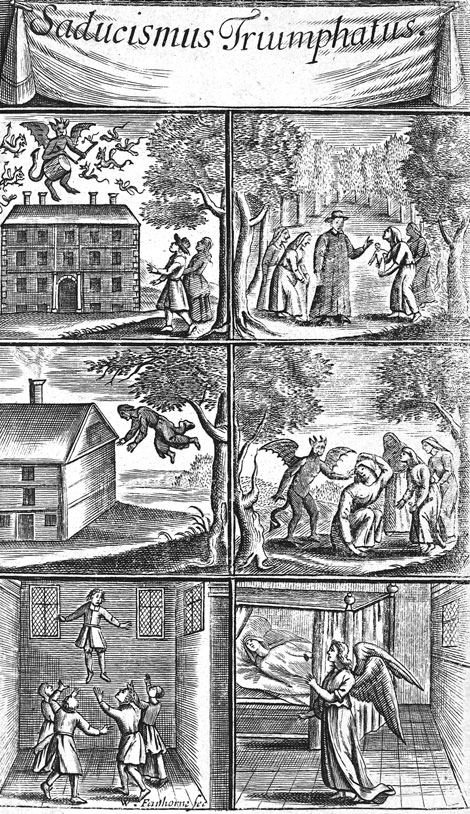
Illustration 9. The title page of Joseph Glanvills Saducismus Triumphatus (Sadducism Triumphed Over) from 1689 includes six pictures from witch and ghost stories in the collection. Most important is the story of the Drummer of Tedworth, with demons playing the drums, in the top left. Courtesy of the University of Pennsylvania.
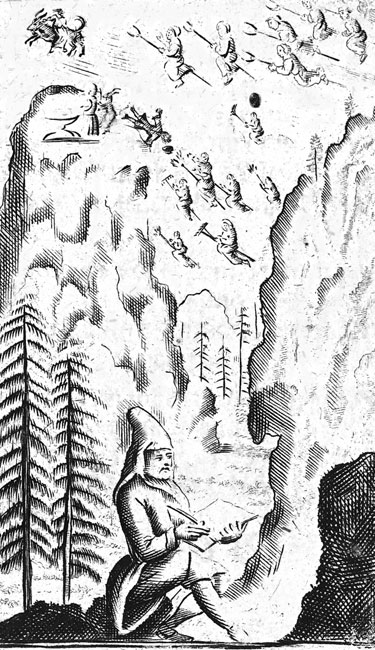
Illustration 10. The title page of Christian Thomasius Krze Lehrstze (Short Lessons) from 1703 shows the skeptical author thinking in the foreground. Above him witches fly on brooms, rakes, and a goat toward a goat-demon preparing a sabbat on a mountaintop, from which a man falls. The original caption warns the reader that the witches may seem real, but they are actually just a drawing on paper. Courtesy of the University of Pennsylvania.

Illustration 11. This illustration is linked to the Witches of Warboys, included by Richard Boulton in his book, A Compleat History of Magick, Sorcery, and Witchcraft, published in 17151716. It shows a witch using a wand and a book to conjure various demons, while protected by a magic circle and candles. Although the scene typifies what people imagined witches did, the actual history of the Witches of Warboys included no such moment. Courtesy of the University of Pennsylvania.
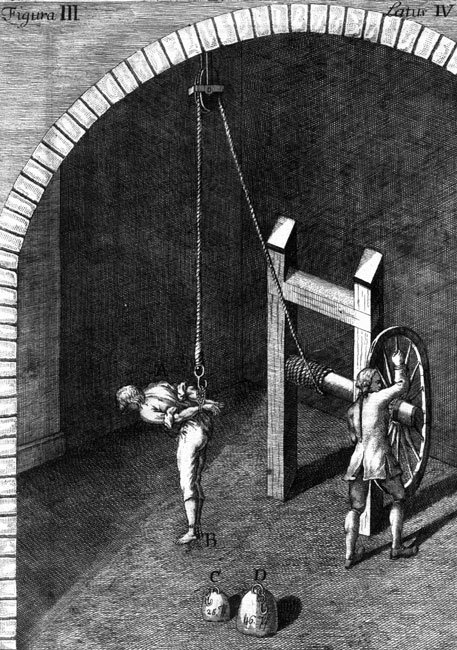
Illustration 12. This plate from the legal collection Constitutio Criminalis Theresiana of 1769, the law code that outlawed witch hunts, depicts a man hoisting a victim into the air using the strappado. Victims were left to hang for set times, determined by the investigators, while the weights below the victim could be tied to his feet to increase the painas would jerking the wheel of the pulley to bounce him. Courtesy of the University of Pennsylvania.


